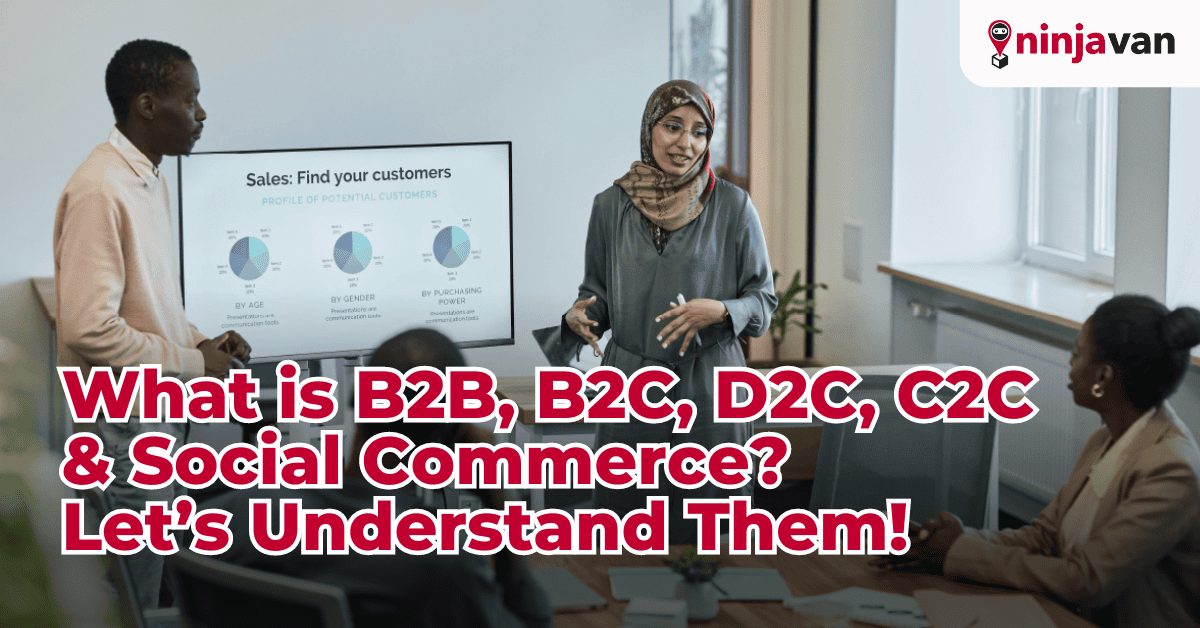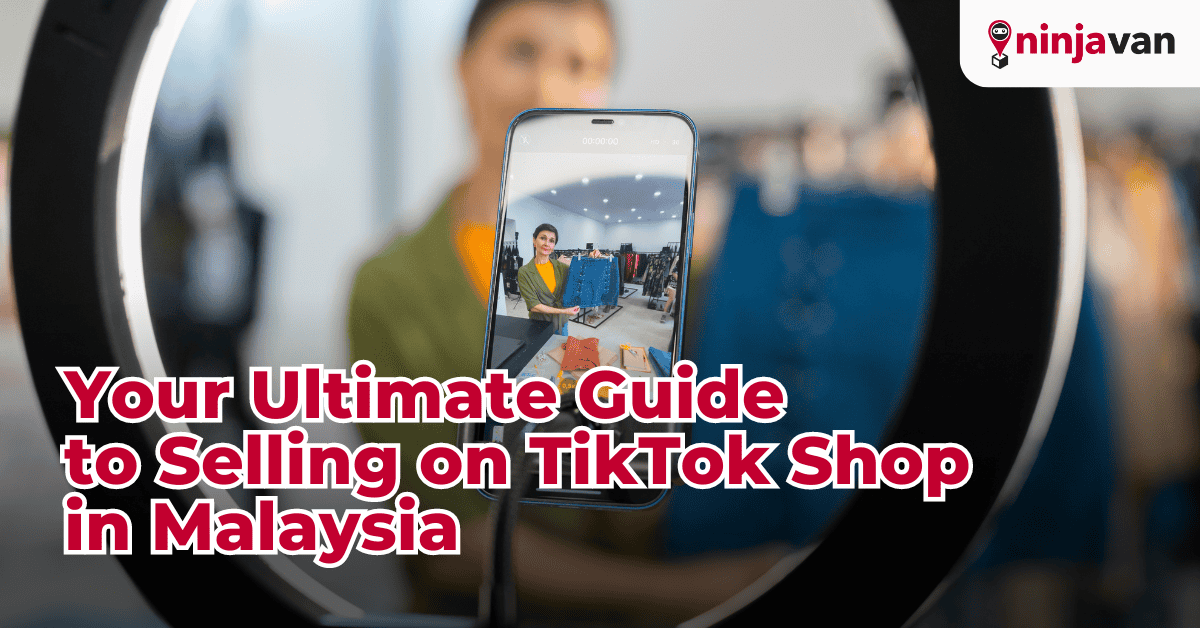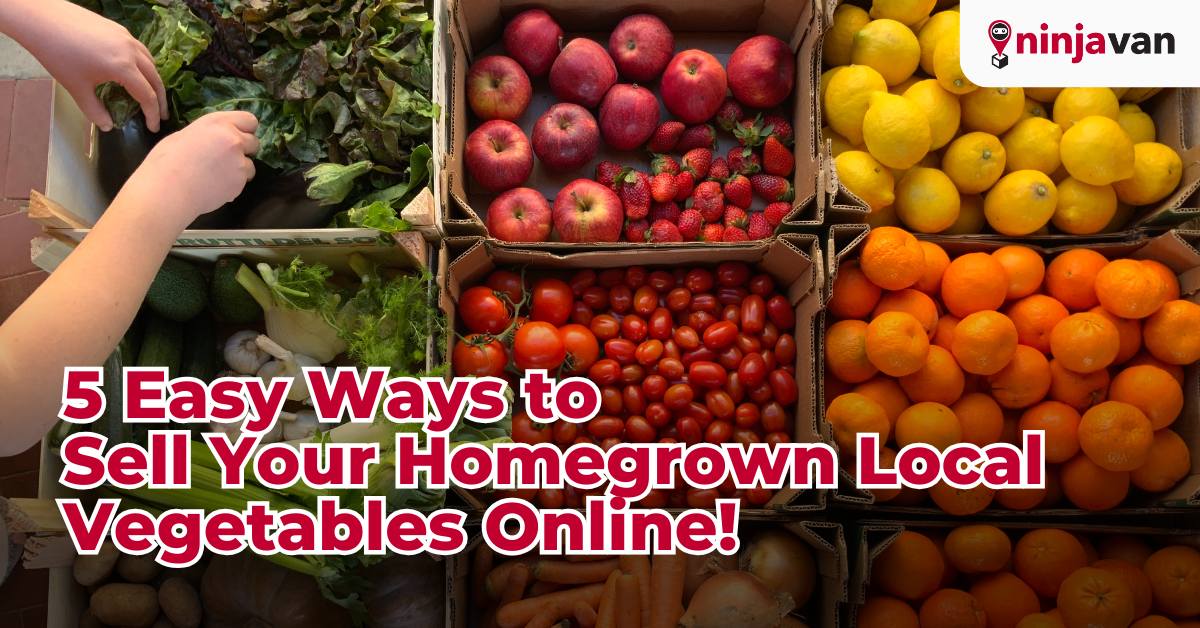Whether you’re considering a new role or venturing into a new business, it’s crucial to understand the industry landscape of the company you’re joining or the direction of your startup. For instance, even within the F&B industry, a company like KFC is selling directly to customers. But what about its chicken supplier? That’s on an entirely business model, selling to businesses like KFC.
It sounds confusing at first, but once you break it down, it’s really not that complicated! Understanding which sales model—whether it’s B2C, B2B, D2C, C2C, or even social commerce—you’re dealing with can really help you pinpoint the right strategy and direction for your career or business venture.
B2C (Business-to-Consumer): The Classic You Know

As consumers ourselves, B2C is probably the business model we know oh-too-well. When it comes to B2C, it’s all about making that personal connection and standing out in a crowded market, often driven by emotions and personal preferences. Brands like Nike or the up-and-coming local ZUS Coffee are great examples—they know how to appeal directly to you, the consumer, through marketing that feels personal and relevant.
So, what’s good about B2C, and what are the challenges that come with it? Glad you asked!
Opportunities that Sweeten the Deal:
- Brand Evolution: Strong branding can forge deep emotional ties that drive sales.
- Market Broadening: The digital age makes scaling and reaching new markets more accessible than ever.
- Insight from Interactions: Direct customer interactions offer invaluable data, paving the way for tailored marketing strategies.
Challenges that Spice Up the B2C Landscape:
- Intense Rivalry: Standing out is a battle with endless competitors vying for attention.
- Fickle Loyalty: Keeping consumers loyal is a high-stakes game with constant shifts in preferences.
- Hefty Marketing Spend: Reaching consumers effectively often demands a robust investment in marketing.
What’s the Deal with B2B (Business-to-Business)?

B2B is all about businesses selling to other businesses. It’s like when one company says to the other, “Hey, you’ve got something we need to make our stuff better,” and then they strike a deal. B2B transactions typically involve large orders and long-term partnerships. You’re not just selling a single product; you’re often in it for the long haul. Think of companies like Ninja Van, which provides logistic services to businesses to help them operate more smoothly!
While the B2B model can be rewarding, it’s not as easy as it sounds. Here’s a breakdown of the challenges and opportunities:
Opportunities of B2B:
- Higher Order Values: Deals in B2B usually involve larger quantities and higher values, providing substantial revenue from each customer.
- Recurring Revenue: Long-term contracts and ongoing service agreements can ensure steady income streams.
- Niche Markets: B2B allows businesses to specialise deeply, becoming indispensable partners in specific industry sectors.
Challenges of B2B:
- Extended Sales Cycles: Closing deals can take months, if not years, due to the need for multiple approvals and complex negotiations.
- High Customer Expectations: B2B buyers often demand customised solutions and high levels of service, which can be resource-intensive.
- Maintaining Relationships: The success of B2B often hinges on strong, ongoing relationships, which require constant attention and nurturing.
The D2C (Direct-to-Consumer) Revolution

D2C, or Direct-to-Consumer, is reshaping the retail landscape as the fresh and vibrant approach that directly connects brands with their end consumers, bypassing traditional middlemen like retailers or wholesalers. In Malaysia, brands like Oxwhite and Christy Ng have excelled in the D2C arena by forging strong brand identities and cultivating direct relationships with their customers through online platforms.
This direct connection enables brands to quickly adapt based on real-time consumer feedback. However, managing the entire chain—from production to customer service—poses significant challenges:
Opportunities of D2C:
- Brand Control: Complete control over branding and marketing strategies allows for a unified customer experience that enhances brand loyalty.
- Customer Insights: Direct interactions provide valuable data, enabling tailored marketing and product development strategies that better meet consumer needs.
- Higher Margins: By eliminating intermediaries, brands can enjoy higher profit margins, providing more resources for reinvestment into product innovation and customer service.
Challenges of D2C:
- Supply Chain Management: Owning the supply chain end-to-end requires significant investment and expertise, particularly in logistics and inventory management.
- Customer Acquisition Costs: Building a customer base from scratch without the visibility provided by retailers can lead to high marketing and customer acquisition costs.
- Customer Service Demands: Direct sales increase the demand for exceptional customer service, requiring continuous investment in support systems and personnel.
C2C (Consumer-to-Consumer): People Power

C2C is where consumers sell to other consumers, often through online platforms that make it easy to connect. Think eBay, Carousell, or even Facebook Marketplace. C2C lets people sell stuff they no longer need to someone who wants it—simple as that.
This model has exploded with the rise of online marketplaces and social media. It’s super accessible, allowing anyone with something to sell to find a buyer. However, while the C2C model opens up numerous possibilities, it also comes with its own set of challenges that participants need to navigate:
Opportunities of C2C:
- Accessibility: The ease of setting up shop online allows anyone to sell, greatly expanding economic participation.
- Community Engagement: C2C platforms foster a sense of community and trust, which can encourage repeat transactions and build loyal customer bases.
- Cost Benefits: Sellers can often offer items at more competitive prices due to the minimal overhead involved, attracting a broader range of buyers.
Challenges of C2C:
- Fraud Risks: The simplicity and accessibility of these platforms can unfortunately also attract fraudulent activities, requiring vigilance from both buyers and sellers.
- Quality Variability: The lack of standardised quality checks means product conditions can vary widely, potentially leading to buyer dissatisfaction and disputes.
- No Formal Guarantees: Transactions typically lack the guarantees and return policies seen in formal retail, posing risks for buyers and complicating dispute resolution.
Social Commerce: Shop Where You Scroll

Social commerce merges social media with e-commerce, transforming how we shop by integrating it directly into the social platforms we use every day. On Instagram, TikTok, and Facebook Live, you can purchase items directly from your feed without leaving the app.
What sets social commerce apart from traditional e-commerce is its seamless integration of social interaction and shopping. You might stumble upon a product featured in an influencer’s post, click through, and make an immediate purchase.
Opportunities of Social Commerce:
- Direct Engagement: Brands can interact directly with consumers, tailoring their marketing strategies based on real-time feedback.
- Enhanced Visibility: Leveraging influencers and viral content can significantly increase brand visibility and reach.
- Streamlined Purchasing: The convenience of buying within social apps can enhance customer experience and increase sales.
Challenges of Social Commerce:
- Intense Competition: The digital space is crowded, and standing out requires innovative and engaging content.
- Dependence on Platform Algorithms: Changes in social platform algorithms can affect visibility and engagement rates.
- Building Trust: Encouraging purchases through social platforms demands high levels of trust, which can be challenging to establish and maintain.
Finding Your Perfect Sales Model Match

So, how do you choose the right sales model for your business? It comes down to understanding your industry, knowing your audience, and being clear about your goals. Here’s how to figure it out:
- Industry Norms: Look at what’s typical in your industry. Are most businesses going B2B, or is D2C the new norm? Aligning with industry standards can make your life easier.
- Know Your Audience: If your target market is other businesses, B2B is your go-to. But if you’re selling something that people want to buy for themselves, B2C or D2C might be a better fit.
- Set Your Goals: What do you want to achieve? If controlling your brand image and engaging directly with consumers is key, then D2C could be the way to go. For businesses looking to connect with other companies, B2B offers stability and potentially lucrative partnerships.
Navigating Sales Models for Strategic Success
To sum it up, getting a handle on the differences between B2B, B2C, D2C, C2C, and social commerce is like unlocking a new level in the business game. Each model has its own flavour, with unique perks and challenges. The key is to figure out which one matches your goals and your audience.
Sometimes, a hybrid approach like B2B2C (Business-to-Business-to-Consumer) is the best of both worlds, allowing you to reach both businesses and consumers. As the business world continues to evolve, staying clued in on these models will keep you ahead of the curve.







